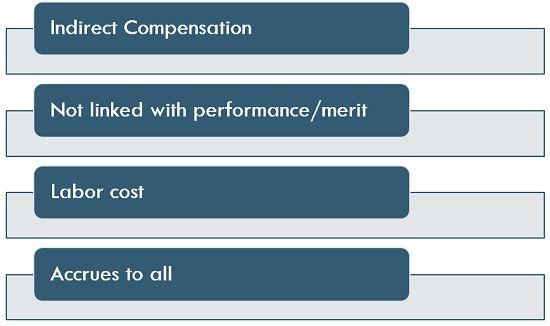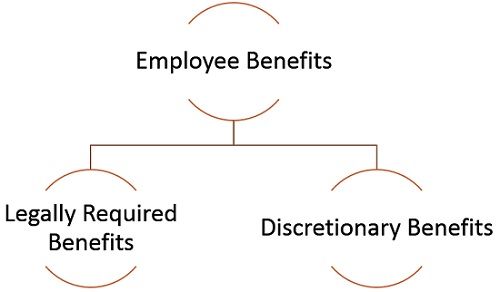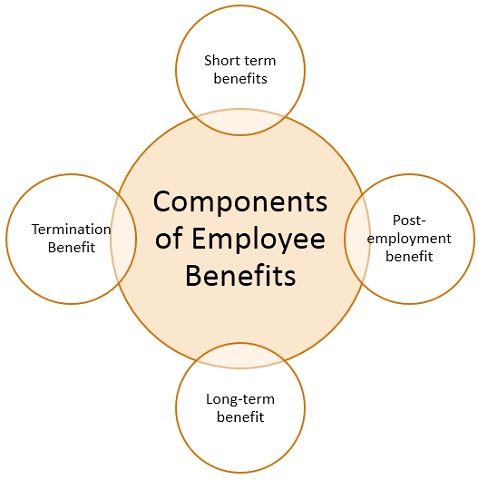Definition: Employee Benefits implies the financial or non-financial compensation, offered to the employees, which forms part of their employment contract. It has an important role to play in differentiating two jobs offering the same salary, which vary in terms of the benefits offered.
In finer terms, any kind of consideration given to the employees, in return for the services provided by them to the company, other than their basic pay, is called employee benefits.
Characteristics of Employee Benefits
The characteristics of employee benefits are discussed as under:
- Indirect Compensation: It is an indirect compensation which can be provided as perquisites and fringe benefits which an employee gets in addition to the basic salary or wage. Therefore, it is also called as non-wage/non-salary compensation.
- Not linked with performance/merit: Employee benefits do not accrue to an employee for reaching the targets, for a particular level of performance, or possessing a particular skill/merit rather they are provided for keeping the interest of the workers intact and making the job valuable to him/her.
- Labour cost: No matter if an employee receives cash or non-cash benefits, it ultimately accounts for the cost to the company.
- Accrues to all: Whatever perks provided by the employer in the name of employee benefits are offered to all the employees, and not just to a particular group. However, the designation of the employee does make a difference in the number and amount of benefits.
Factors such as industrialization, the influence of organized labour, wage control, tax advantage, cost advantage, inflation and legislation influences the employee benefits.
Types of Employee Benefits
Employee Benefits are divided into two categories:
- Legally Required Benefits: Those Benefits which are required by law, which must be provided by the employer to their employees are called legally required benefits. Social Security Benefit, Workmen compensation insurance, health insurance, medical leave, maternity leave etc. are some legally required benefits.
- Discretionary Benefits: There are certain benefits which are voluntarily provided by the organization are Discretionary Benefits. It may include paid time off, travel allowance, conveyance allowance, accommodation facility, earned leaves, etc.
Components of Employee Benefits
Employee Benefits covers the following components:
- Short-term employee benefits: Those benefits which fall due for payment within a period of one year are covered under short-term employee benefits. It includes salaries, wages and social security contribution (i.e. health insurance), paid leaves, profit sharing and bonus and non-monetary benefits like car, free medical facilities, free or subsidized goods, free or subsidized lunch, etc.
- Post-employment benefits: The employment benefits which becomes payable on the completion of the employment term are called post-employment benefits. Pension, gratuity, provident fund, post-employment medical care, etc., are some examples of such benefits.
- Long-term benefits: Any benefit which does not fall due within a period of twelve months, is covered under long term benefits. Sabbatical leave, jubilee, long term disability benefits, etc. are examples of long term benefits.
- Termination benefits: Termination benefits are the benefits given to an employee when an organization terminates an employee prior to the normal retirement date, or an employee accepts the voluntary redundancy, by opting for such benefits. Voluntary Retirement Scheme (VRS) is an example of such benefit.
It covers those perquisites which are provided either to the employee himself/herself or their spouses, children or dependants, which are paid either directly to the employees or the survivors of the deceased employee such as their spouses, children, dependents or legal heir/nominee or to the trust.
Objectives of Employee Benefits
- To attract qualified candidates at the time of recruitment, as well as to retain invaluable human resources for the long term.
- To offer such benefits to the employees, which are offered by other organizations in the same industry to their employees, to create a competitive package.
- To maintain harmonious industrial relations.
- To raise the standard of living of the employees, which will result in the improvement in the quality of their work life.
- To refine the image of the organization in the eyes of the public at large.
- To constitute an ideal package for an employee, which enhances the overall value they get from their job.
In a nutshell, employee benefits are the add on advantages that are received by the employees apart from their regular salary and are not based on their performance.

Leave a Reply